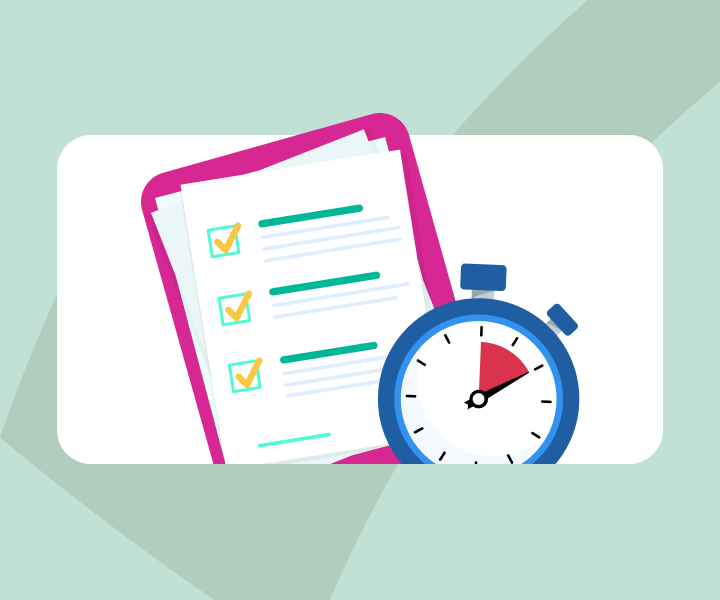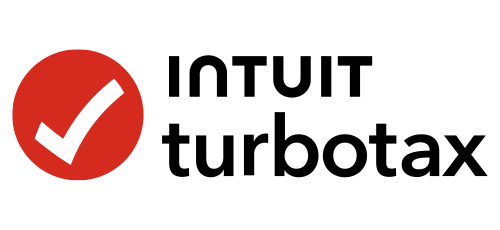What's the Quickest Way to File My Corporate Taxes?
TurboTax Canada
May 22, 2025 | 6 Min Read
Updated for tax year 2024


A new way to file your business taxes is here!
When you have an incorporated business, there are so many balls to juggle. From managing a team to finding suppliers, it's a fine balancing act. Let's not forget when tax season arrives, you're also responsible for filing the T2 Corporation Income Tax Return. But how can you do this quickly and efficiently?
Here we guide you through the corporate tax filing process, important deadlines and payments, and helpful T2 filing tips so you can get your taxes done pronto.
Whether you're on a time crunch or need a more streamlined way to file your corporate taxes, here are some tips to get your corporate taxes done quickly, so you can get back to running your business.
Key Takeaways
- The corporate tax filing deadline is 6 months after your fiscal year-end.
- Some corporations are eligible to fast-track their T2 filing using the simplified T2 Short Return.
- Besides income tax, your business may owe EI premiums, payroll taxes, and GST/HST remittance.
- Most corporations are required to file business taxes online using CRA-approved tax software, like TurboTax Assisted for Business Incorporated.
How corporate taxes are filed in Canada
With certain exceptions, corporations must file their T2 Corporation Tax Form return electronically for tax years beginning after 2023. The only exceptions are insurance corporations, non-resident corporations, corporations reporting in functional currency, and corporations spared from tax owing under section 149 of the Income Tax Act.
Since TurboTax Business Assisted tax preparation software is approved by the CRA, you can file your taxes easily and quickly by logging in and filling in your T2. A team of Canadian business tax experts are ready to answer your questions. With TurboTax Business, you have access to a Canadian tax expert who answer questions as you go and can review your return before you file your business taxes. So, you have peace of mind that your taxes are calculated correctly and comply with CRA regulations. Lastly, TurboTax can help with maximizing your tax deductions to help you keep more money to put towards growing your business.
For eligible resident (and non-resident) corporations who wish to file a paper return, you can find the respective mailing address on the CRA’s website.
T2 vs. T2 Short Return
The T2 return is the standard 9-page document for all resident corporations (except for Crown corporations, Hutterite colonies, and registered charities), even if these businesses don’t owe taxes.
The T2 Short Return is a simplified version of the original T2. It’s only 2 pages and includes a Schedule 1 for net income/losses. However, you may be required to complete a Schedule 8, capital cost allowance (CCA), and a Schedule 50, Shareholder Information.
So, who’s eligible to fill out the T2 Short Return? A Canadian-controlled private corporation (CCPC) with a nil return or net loss can complete this tax form. Alternatively, a corporation exempt from tax under Section 149, such as a non-profit organization can also fill out a T2 Short Return. TurboTax Business can help complete a nil return while providing you with unlimited access to our Canadian tax experts while you prepare your return.
Furthermore, the corporation must meet all of the criteria below to submit a short return:
- Only be established in one province or territory
- Not claiming any refundable tax credits
- Didn’t pay or receive any taxable dividends
- Must be reporting in Canadian dollars
- Doesn’t have an Ontario transitional tax debit
- Doesn’t have an amount calculated under section 34.2
If your company doesn't meet these requirements, you need to use the standard T2 form.
Regardless of the type of T2 form you complete, all corporations are required to fill out Schedules 100, 125, and 141.
Paying taxes in instalments
If you haven’t done so, mark your calendar with the T2 filing deadline. Be sure to file your business taxes within 6 months after your fiscal year-end (and not based on the calendar year-end). For example, if your fiscal year ends on May 31, then you need to file by December 1.
Corporations with taxes payable are usually due 2 months after the year-end (although CCPCs may get up to 3 months if they meet specific requirements).
Scenario 1:
Generally, if you’re in the first year of running your business or you owe less than $3,000 in taxes in the year, then you’ll pay the entire balance in full.
Scenario 2:
However, once your corporation or CCPC owes more than $3,000 in taxes and has less than $500,000 in taxable income in the tax year, you must pay monthly or quarterly instalments.
Your corporation should be making monthly or quarterly instalment payments based on estimated income for the year. Then within 2 months after year-end, you will pay any difference between what you paid in instalments and the actual amount owing.
Pro tip: You can set up automatic recurring payments once you've calculated your instalment payments for the year.
Regardless of your situation, be sure to file your corporate taxes and pay on time, or you will incur interest and penalties.
How TurboTax Business can help
Trying to answer all the questions in the T2 form can be daunting. That’s why TurboTax Business is here to lend a hand. Here are a few key features that can help make the T2 tax return process go more smoothly:
- Automated calculations. Don’t worry about crunching the numbers yourself—our CRA certified tax software does all the calculations for you. For instance, it can help you calculate the amount you can claim for your small business deduction.
- Help from a team of Canadian tax experts. You'll receive unlimited access to a roster of seasoned Canadian tax experts. This is handy when questions pop up while filing your business’s tax return, such as "How can I file my GST/HST return?" and "How do small business deductions work?" Plus, you can get the same service from our experienced tax professionals for a fraction of the cost of an accountant.
- Direct CRA submission. TurboTax software is officially NETFILE certified. It will submit your corporate tax return directly online to the CRA electronically.
Tips for filing your corporation taxes
Since the T2 form will ask many detailed questions, you should have all your ducks in a row. We’ve compiled the most helpful tips to help your incorporated company prepare, so you can have a fast and seamless tax filing experience.
Organize your business records and receipts
Before you start filling out the T2 tax form, you’ll need your financial statements (including the income statement, balance sheet, and cash flow statement) and bookkeeping records. Additionally, you’ll need all your business receipts, bank and credit card statements, business charitable donation receipts, and T-slips.
Understand the different types of corporate taxes payable
To simplify how corporate tax works, here’s a high-level overview of how corporate taxes are structured. These are 2 primary levels of tax (rest assured, TurboTax will assist you with these sections when you fill out the T2 form):
- Federal corporate income tax:
- The general tax rate is 15% (after a general rate reduction and federal tax abatement).
- Then, there’s a small business tax rate of 9%, which applies to CCPCs with an active business income limit of $500,000.
- Lastly, the refundable tax on investment income applies to those who have passive investment income, such as dividends, interest, or rental income. As a result, the tax is partly refundable to the corporation when shareholders receive dividends.
- Provincial/territorial income tax:
- Every province/territory has its own tax rates, including small business and general rates.
Keep track of GST/HST & payroll remittance
Stefanie Ricchio
CPA and TurboTax tax expert
For businesses that collect Goods and Services Tax (GST)/Harmonized Sales Tax (HST) from customers, it must be remitted to the government. Based on your remitter type, you’ll need to hand over the sales tax monthly, quarterly, or annually.
If you hire employees, you’re responsible for collecting Employment Insurance (EI), Canada Pension Plan (CPP)/Quebec Pension Plan (QPP), and matching contributions. Plus, you need to deduct income tax from your employees. Your remitter type will determine when you need to submit these corporate taxes and contributions, which can be weekly, monthly, or quarterly.
Determine your eligible small business tax deductions
The small business deduction is one of the most common tax deductions for small businesses to take advantage of to reduce their federal corporate tax rate by 9%. This tax deduction applies to businesses with up to $500,000 in active income (such as selling goods or services). TurboTax can help you find your eligible deductions.
However, you can’t claim certain types of income, such as passive investment income, foreign income, or rental income from a property. CCPCs must complete Schedule 7 to calculate the small business deductions.
Calculate taxable income
The T2 form has a section to calculate your taxable income. You may need to fill out additional attachments, including:
| Types of Schedules | Purpose |
| Schedule 1 | To calculate your net income or loss |
| Schedule 2 | For charitable gifts and donations |
| Schedule 3 | For dividends paid and received |
| Schedule 4 | For corporation losses |
Know the corporation tax deadline
Incorporated companies have 6 months after their fiscal year-end to file their T2 online. For example, some businesses (but not all) have a December 31 year-end, their corporation tax return deadline is June 30. Keep in mind, if you’re a corporation in Quebec, you also need to file with Revenu Québec in addition to the CRA.
File online using tax software
Considering that most corporations need to file business taxes online, using corporate tax filing software can make the process smoother. For instance, TurboTax Business provides step-by-step guidance when filing your tax return. For each section, it’ll ask you simple questions so it’s easy for you to answer. Plus, TurboTax is up-to-date with the latest tax laws (so you don’t need to be).
Getting your taxes done right
TurboTax Business is a cost-effective solution that allows you to do your corporate taxes on your own, while tapping into expert help if you need it. We’re here to ensure you get the most out of your corporate tax returns.
Related articles

© 1997-2024 Intuit, Inc. All rights reserved. Intuit, QuickBooks, QB, TurboTax, Profile, and Mint are registered trademarks of Intuit Inc. Terms and conditions, features, support, pricing, and service options subject to change without notice.
Copyright © Intuit Canada ULC, 2024. All rights reserved.
The views expressed on this site are intended to provide generalized financial information designed to educate a broad segment of the public; it does not give personalized tax, investment, legal, or other business and professional advice. Before taking any action, you should always seek the assistance of a professional who knows your particular situation for advice on taxes, your investments, the law, or any other business and professional matters that affect you and/or your business.









